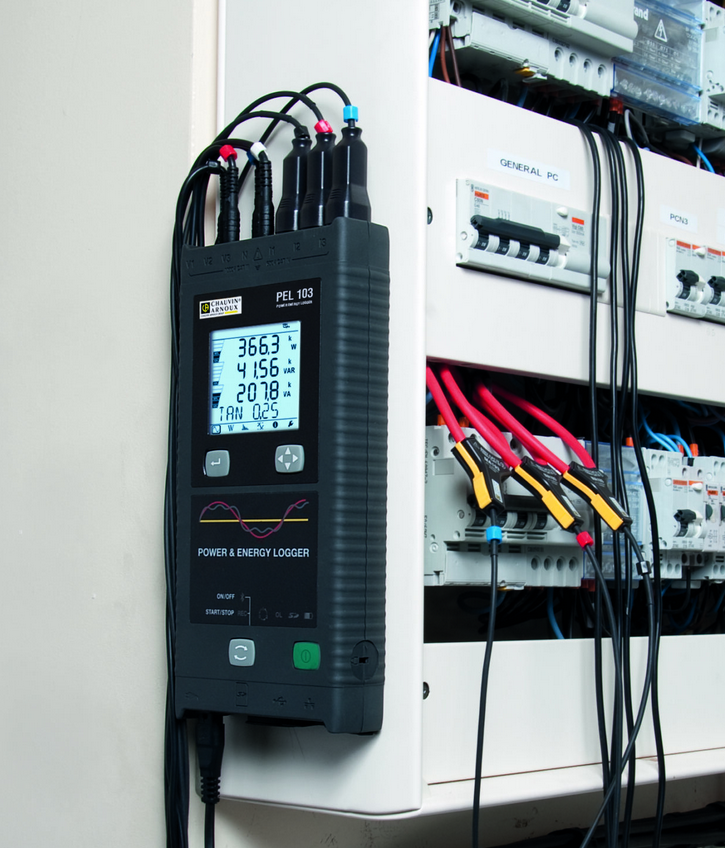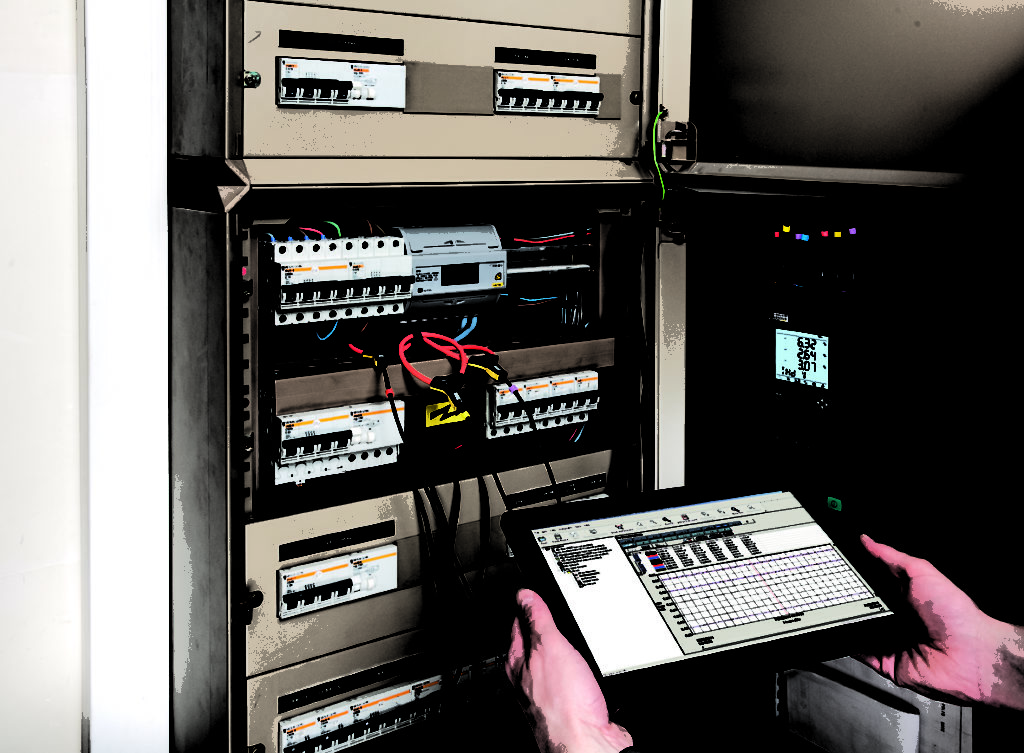Modern portable power and energy loggers are compact, lightweight, battery or mains powered, electronic monitoring instruments used for collecting electrical data without the need for operator intervention or presence. They can be installed in distribution panels or around the facility without difficulty, and removed as easily without the need to shut down the installation or office building first. They are capable of storing tens of thousands to several million readings, and can be programmed to collect data on a sub cycle basis or store averages at user programmable aggregation periods. They are available with or without displays and can transmit their recorded data locally or remotely.
PELs gather electrical data such as current and voltage, power and energy and are also able to indicate phase angle cos φ, tan Φ, power factor THD and harmonics. The most versatile loggers employ separate sensors for each parameter to be recorded and will automatically recognize those sensors and set the ratio and measurement parameters accordingly.
Multi-channel data loggers will collect data from several input types simultaneously. So, for example, a six or eight channel logger may be set up to collect measurements from three or four voltage and three or four current inputs providing the ability to monitor three-phase power systems. Mathematical capabilities provide the ability to calculate power and energy, as well as the cost associated with that energy consumption.
Remote access to the data collection process from the office, or at remote locations with wireless or Internet access, provides the ability to track several consumption points around the facility, or multiple facilities, without the expense of travel to retrieve the data.



